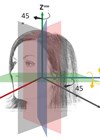Earwax removal is a controversial and much-debated issue in audiology. Risks and public safety call for reforms, sparking discussion on professional standards.
Earwax is a natural secretion produced by the ear. It is an amalgamation of desquamous epithelial skin cells, loose hairs, sebum and apocrine sweat. It is believed to help moisturise and provide a hydrophobic coating of the overlying skin of the ear canal, whilst also protecting the ear from potential harmful pathogens by maintaining an acid mantle.
The mild acidic nature of earwax is also thought to act as natural insect repellent. Additionally, it is hypothesised that earwax helps to naturally cleanse the ear by trapping and expelling dust, dirt or any other foreign matter that may have entered inside of it.
For the majority of us, earwax is non-troublesome since it naturally migrates out of the ear via the lateral epithelial skin migration process and also through jaw-aided movements. However, it is estimated that impacted and symptomatic earwax can affect around 6% of the general population [1]. According to Guest, around 2.3 million people each year in the UK suffer from earwax impaction that requires intervention [2].

Neel performing ear wax removal.
In the UK, current pressures on the NHS healthcare system mean that, while earwax removal was once readily and easily accessible at primary care level at no cost to the individual, this is no longer the case in some parts of the country. Instead, individuals are now often being asked by their healthcare provider to either continuously instil cerumenolytics, indulge in DIY earwax removal using over-the-counter syringes or, alternatively, consider private self-funded treatment.
Due to a combination of the above and the shocking fact that earwax removal is unregulated in the UK, as is also the case in many other countries worldwide (e.g. Australia and New Zealand), there has been a recent exponential rise in lay people, with no previous ear anatomy / pathology / physiology experience, let alone healthcare experience, actively training to become ‘ear wax practitioners’. The duration of such training can range from just a single day to a few months. Perhaps even more shocking is that there are many hearing aid centres in the UK, including national companies, employing such lay people and / or training their own non-clinical administrative member of staff to perform earwax removal.
"For audiologists offering earwax removal, it is by far the most invasive procedure they perform in their clinical role"
This is in order to allow their hearing aid dispensers and audiologists to focus on hearing aid sales, which is a regulated activity in the UK. It also, of course, helps to reduce their employee wage bill. Moreover, a professional body for hearing aid dispensers in the UK was seemingly supportive of such unprofessional and unsafe practices when, in 2023, they released guidelines for public consultation advocating for these ear wax practitioners to become affiliate members. They later performed a U-turn and paused this proposal as a result of the backlash they received both from within their own membership, with some members subsequently deciding to cease their membership, and the public.
For audiologists offering earwax removal, it is by far the most invasive procedure they perform in their clinical role. It is regarded as an expanded scope of practice since it does not currently form part of the core training to become an audiologist. There are many potential risks associated with earwax removal. Firstly, there are inherent procedural risks, such as lacerations to the delicate skin lining the auditory canal wall, perforation to the tympanic membrane, noise-induced hearing loss and tinnitus, iatrogenic otitis externa, vertigo due to the caloric effect and possibly even auditory syncope in individuals with Arnold’s nerve hypersensitivity. Secondly, it is not uncommon for patients to attend an earwax removal appointment believing their symptoms are due to earwax when, in fact, they have an underlying pathology. Some of these pathologies can be life-threatening and / or require an urgent medical referral. Examples of such pathologies include cholesteatoma, malignant otitis externa, nasopharyngeal mass causing otitis media with effusion in adults, vestibular schwannoma and sudden sensorineural hearing loss, etc.
To be able to suspect any of the above pathologies and refer appropriately onwards requires an ability to undertake a detailed and thorough history, perform further assessments where necessary (i.e. tuning forks, pure tone audiometry, tympanometry, etc.) and of course being able to rely upon years of clinical diagnostic skills. Therefore, earwax removal should only be performed by suitably qualified medical and healthcare professionals who possess a deep understanding, knowledge and experience working with the ear, such as ENT, audiologists, GPs and nurses who have undergone extensive ear training.
Alarmingly, some of the lay people currently performing earwax removal in the UK are now advertising themselves as ‘audiologists’ given this is not a protected professional title. A few are also claiming to offer diagnostic hearing tests and even middle-ear assessments as part of their earwax removal service. As a result, there are many unsuspecting members of the public booking into see such lay people for earwax removal, believing the individual treating them is suitably qualified and experienced in performing the procedure and all that it entails. Indeed, I was visited recently by a patient who had twice been treated unsuccessfully by a non-clinical sales assistant, which was unbeknown to the patient at the time. After removing what was a relatively easy segment of earwax, the patient had an underlying cholesteatoma that required quicker-than-usual mastoid surgery by ENT, given they were immunocompromised.
As a result of the growing safety concerns for the public in the UK, The National Aural Care Strategy Group (NACSG) was formed in 2023. NACSG membership currently includes representatives from key stakeholder organisations and professional bodies in the UK, such as ENT UK and the British Academy of Audiology (BAA), to name a couple. The core objective of NACSG is to prioritise patient safety by improving the quality of earwax removal currently being delivered. As well as updating current training guidelines, they aim to clearly define the scope of professionals who should be able to provide earwax removal. In addition, another strategic aim of the group is to educate the public about the importance of seeking a suitably qualified medical or healthcare professional when arranging to have their earwax removed.
However, and despite the very best intentions of NACSG, the overall objective must be to ensure earwax removal becomes a regulated and protected activity, meaning that legally it can only be performed by suitably qualified medical and healthcare professionals with appropriate training, knowledge and experience relating to the ear. This requires government intervention and changes to the law.
References
1. Jabor MA, Amedee RG. Cerumen impaction. J La State Med Soc 1997;149(10):358–62.
2. Guest JF, Greener MJ, Robinson AC, Smith AF. Impacted cerumen: composition, production, epidemiology and management. QJM 2004;97(8):477–88.
Declaration of competing interests: NR owns and operates The Hear Clinic Ltd, an independent audiology business in Leicester, UK. He is also the director of Clearwax, an earwax removal training company, equipment supplier and earwax removal service operating throughout the UK.









